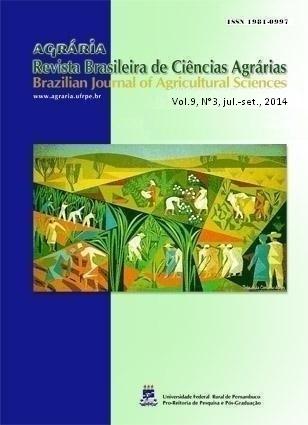Residual herbicides in weed management in transgenic soybean
DOI:
https://doi.org/10.5039/agraria.v9i3a4499Keywords:
glyphosate, ALS inhibitors, no tillageAbstract
The continued use of glyphosate can select resistant weeds biotypes and tolerant species, suggesting the need to develop new management practices. Thus, the aim of this proposal was to evaluate the effectiveness of different managements in soybean using residual herbicides and post-emergent control of weeds, and observe the possible effects on crop development. The experiment, in the field, was in a randomized block design with four replications and 14 treatments, involving the application of diclosulam (29.4 g ai ha-1) and sulfentrazone (600 g ai ha1) and post emergent glifosato (712 g ai ha-1) and 2,4-D (670 g ai ha-1) in weed desiccation, 14 days before soybean sowing, and treatments with glifosato in soybean stages V2 and V4 (356 g ai ha-1) and glifosato applied at a single time in V2 or V4 (712 g ai ha-1). We noted the importance of applying residual herbicides with glyphosate to weed control plant, and for the development of culture. The addition of the herbicide sulfentrazone diclosulam or desiccation became a single application of glyphosate in the V4 stage of soybean enough.
Downloads
Downloads
Published
How to Cite
Issue
Section
License

This work is licensed under a Creative Commons Attribution-NonCommercial 3.0 Unported License.


